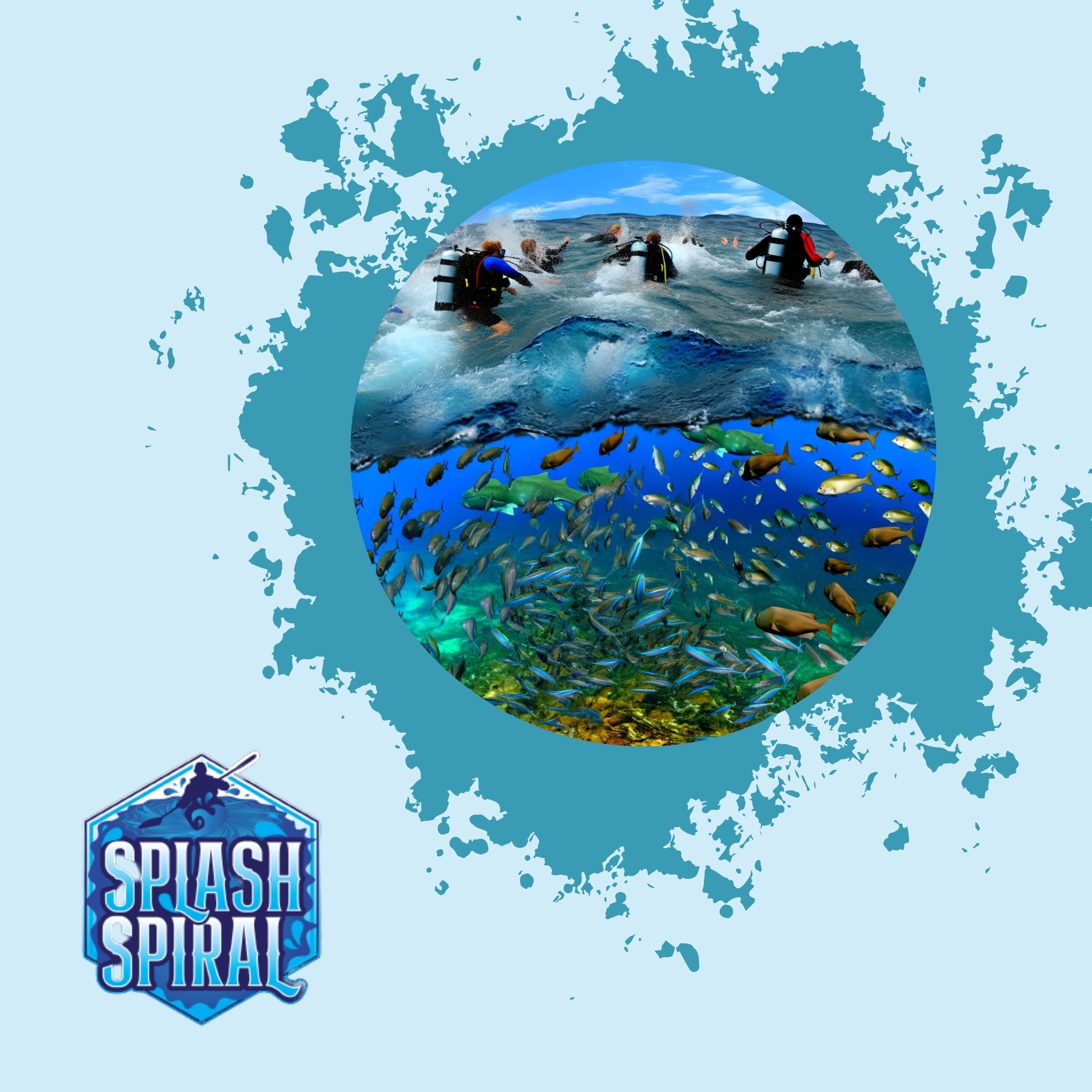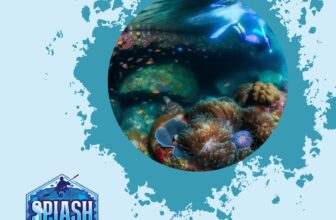
Ocean upwelling is a natural process that has significant impacts on marine environments and diving conditions. Understanding this phenomenon helps divers appreciate the underwater ecosystems they explore and better anticipate diving conditions. Whether you're a beginner diver or considering taking the plunge, this outline will explain the ocean upwelling effects on marine biodiversity and the diving experience.
Introduction
Ocean upwelling might sound like some arcane oceanographic term, but trust me, it's super relevant if you're diving in open waters. So, what is it? In simple terms, ocean upwelling is a process where deep, cold, nutrient-rich water rises to the surface. This natural mechanic not only supports amazing marine life but also changes the game for diving conditions.
Now, why should you care about ocean upwelling as a diver? Knowing about it can give you a massive edge. For one, it helps you understand why certain areas are teeming with marine life, making your dives far more exciting. Plus, it plays a role in water temperature and visibility, two crucial factors that can make or break your diving experience.
By grasping the basics of upwelling, you're one step closer to mastering the underwater environment and enjoying a safer, more thrilling dive. Whether you're just starting or thinking of diving in, this knowledge is as essential as your diving gear.
Ocean Upwelling Effects
Ocean upwelling is like Mother Nature's conveyor belt, moving cold, nutrient-rich water from the depths of the ocean to the surface. This process starts when winds blowing across the ocean surface push water away, causing deeper water to rise and fill the gap. Think of it as lifting the ocean's hood and letting the engine of the deep sea show its powerful workings.
This movement of water has wide-reaching effects, known collectively as "ocean upwelling effects." One primary consequence is the enrichment of surface waters with nutrients such as nitrate, phosphate, and silicate, which are plentiful in deep ocean waters. These nutrients are crucial for the growth of phytoplankton, the tiny plants that form the base of the marine food web.
For divers, this means that upwelling zones often boast rich marine biodiversity, making them prime spots for witnessing a bustling underwater life. You can expect to see everything from schools of vibrant fish to larger predators like sharks and dolphins who follow their prey. However, the same nutrients that support such life also attract plankton blooms, which can affect water visibility. Imagine diving through a nutrient soup; it's teeming with life but can be a bit murkier than what you might find in more nutrient-poor waters.
Understanding these upwelling effects allows divers to appreciate why certain areas are marine biodiversity hotspots and anticipate shifts in diving conditions.
The Role of Ocean Currents
Ocean currents are the hidden highways of the sea, determining where and how ocean upwelling occurs. These currents act like conveyor belts, moving water across vast distances and playing a crucial role in bringing deep, nutrient-rich waters to the surface. But how exactly do they link up with upwelling, and what does this mean for marine life?
Connection to Upwelling
Upwelling typically happens along coastlines where wind patterns push surface waters away, allowing deeper waters to rise. Ocean currents, driven by factors like wind, Earth's rotation, and water temperature differences, facilitate this vertical movement. Essentially, these currents help shuffle around nutrients that would otherwise remain locked in the ocean's depths, making them accessible to marine life.
Impact on Marine Life
When ocean currents initiate upwelling, the influx of nutrients catalyzes a bloom of phytoplankton, the base of the marine food web. This tiny plankton attracts a variety of small fish and larger predators, creating a bustling underwater metropolis that thrives on the bounty delivered by upwelling. For divers, this means more dynamic and diverse marine ecosystems to explore.
In particular, nutrient distribution influenced by these currents impacts everything from the smallest microorganisms to the largest marine mammals. Strong upwelling zones can turn barren waters into thriving ecosystems brimming with life, offering beginner divers a front-row seat to some of the ocean's most fascinating biological spectacles.
Upwelling Effects on Marine Biodiversity
Ocean upwelling is like hitting the jackpot for marine life. This natural process pulls nutrient-rich water from the ocean's depths up to the surface, creating a buffet for everything from tiny plankton to large fish.
First, let's talk about nutrient cycles. When deep water rises, it brings with it a cocktail of nutrients like nitrates and phosphates, which are essential for the photosynthesis process. This sudden influx of nutrients kickstarts the food chain, starting with phytoplankton. These microscopic plants thrive and multiply, providing food for a variety of marine creatures, including small fish and zooplankton. This generates a chain reaction that supports larger predators, from bigger fish to marine mammals like whales.
The health of marine ecosystems relies heavily on these nutrient cycles. They're the backbone of ocean productivity. Ecosystem health is a dynamic balance, and upwelling plays a crucial role in maintaining this equilibrium. By supplying the upper layers of the ocean with nutrients, upwelling supports a high level of biodiversity, which is critical for a resilient ecosystem. You can dive deeper into how this supports marine populations and the balance of underwater habitats by reading up on marine parasites and their role in ecosystem health.
In essence, upwelling areas become hotspots of life, rich in species diversity and activities. For divers, understanding these effects means gaining insight into why certain regions are more vibrant and bustling with life.
Benefits of Upwelling for Marine Biodiversity
Upwelling significantly enriches marine ecosystems and enhances the diving experience. Here's how:
Rich Feeding Grounds
-
Nutrient-Rich Waters:
- Upwelling brings deep, nutrient-rich water to the surface.
- These nutrients are essential for plankton growth.
-
Diverse Marine Life:
- Plankton supports a variety of marine creatures, from small fish to large whales.
- Upwelling zones become bustling feeding grounds teeming with life.
-
Diving Experience:
-
Beginner divers can witness a high concentration of species in these areas.
-
Float amidst schools of fish, playful seals, and potentially spot whales.
Fishery Productivity
-
Supporting Fisheries:
- Nutrient influx boosts fish populations.
- Upwelling zones become prime locations for commercial and recreational fishing.
-
Sustainable Practices:
- Healthy fish stocks promote sustainable fishing.
- Maintains long-term marine biodiversity.
-
Diving Awareness:
-
Knowing you're exploring a sustainably managed ecosystem enhances appreciation.
-
Learn more about sustainable fishing and its impact on oceans: Sustainable Fishing Practices.
Summary
- Upwelling zones are biodiversity hotspots due to rich feeding grounds and support for fisheries.
- These areas offer beginner divers a chance to witness ocean biodiversity at its finest.
By understanding and appreciating the benefits of upwelling, divers can gain a deeper connection to the marine environments they explore.
Diving Conditions Affected by Upwelling
When it comes to diving, upwelling can be both a boon and a challenge. For beginner divers, understanding how this natural process impacts diving conditions is crucial to having a successful and enjoyable diving experience.
Water Temperature Changes
One of the most immediate effects of upwelling is a change in water temperature. Upwelling brings colder, nutrient-rich water from the depths to the surface. As a result, dive sites that experience upwelling can see a noticeable drop in water temperature. For beginner divers, this means you need to be prepared for potentially chilly conditions even in tropical areas. A good-quality wetsuit or even a dry suit might be necessary to stay comfortable during your dive.
Visibility Factors
Nutrient-rich water is fantastic for marine life but can reduce water clarity. The influx of nutrients often leads to plankton blooms, which can significantly decrease visibility underwater. While this may not be ideal for photography enthusiasts, it does mean you'll get to see a variety of marine life thriving in these nutrient-dense waters.
Learning about Diving
Being aware of upwelling conditions can help you better plan your dives. Various resources are available to help you prepare for these unique conditions. Check out articles on Scuba Diving and general Diving to get more tips and tricks for diving in upwelling-affected areas. These resources can offer invaluable advice on gear selection, dive planning, and what to expect underwater.
By understanding how upwelling affects diving conditions, you can better anticipate and adapt to the changing underwater environment. This awareness will not only make your dives more enjoyable but also safer, ensuring you make the most of your underwater adventures.
Practical Tips for Divers
Identifying Upwelling Areas
Recognizing areas influenced by upwelling can significantly enhance your diving experience. Beginners might wonder how to spot these regions, so here are a few simple clues:
-
Temperature Drops: If you notice a sudden drop in water temperature over a relatively short distance, you're likely entering an upwelling zone. These cold waters come from deeper ocean layers.
-
Marine Life Activity: Upwelling areas often teem with marine life due to the abundance of nutrients. Look for regions where fish, birds, and marine mammals are particularly active.
-
Water Color Changes: The influx of nutrients can alter the water color to a murkier greenish hue, compared to the typically clearer blue of nutrient-poor waters.
- Localized Weather Patterns: Coastal winds often drive upwelling. Pay attention to local weather reports that mention consistent coastal winds, as these are prime indicators of potential upwelling.
By being mindful of these signs, you’ll be better equipped to plan dives in nutrient-rich, biodiverse environments.
Adapting Dive Plans
Once you’ve identified an upwelling area, it's crucial to adjust your dive plans accordingly to maximize safety and enjoyment:
-
Gear Up for Cold Water: Since upwelling brings colder water to the surface, ensure you're equipped with a suitable wetsuit or drysuit to stay warm and comfortable.
-
Visibility Adjustments: Upwelling can decrease water clarity. Opt for dive locations known for maintaining decent visibility despite nutrient influx, and be prepared to rely more on your instruments than usual.
-
Marine Life Encounters: Higher nutrient levels mean an increase in marine life. Be cautious and respectful when diving in these zones, maintaining a safe distance from larger predators that may be attracted to the area.
- Choose Nearby Facilities: When diving in upwelling areas, pick nearby dive centers that are familiar with these conditions. They're likely to offer tailored guidance and gear suited for the unique challenges these environments pose.
By incorporating these practical tips into your diving routine, you'll be better equipped to navigate and enjoy the dynamic conditions created by ocean upwelling. Enjoy your dives, stay safe, and embrace the vibrant marine life that upwelling brings to the underwater world.
Conclusion
Understanding ocean upwelling and its effects is essential for appreciating the intricate balance of marine ecosystems and making informed diving decisions. We've discussed how upwelling brings nutrient-rich water to the surface, creating thriving environments for marine life and influencing diving conditions such as water temperature and visibility. This natural phenomenon supports healthy ecosystems, enhances fishery productivity, and shapes the underwater experiences of divers.
For beginner divers, recognizing the significance of upwelling can add depth (no pun intended) to your diving adventures. By being aware of the dynamic changes in your dive environment, you can better prepare and adapt your plans, making each dive safer and more enjoyable. So gear up, dive in, and immerse yourself in the ever-changing marvels of the ocean. Each plunge into an upwelling-affected area offers a front-row seat to the wonders of aquatic life, driven by the intricate dance of nature’s currents. Happy diving!







